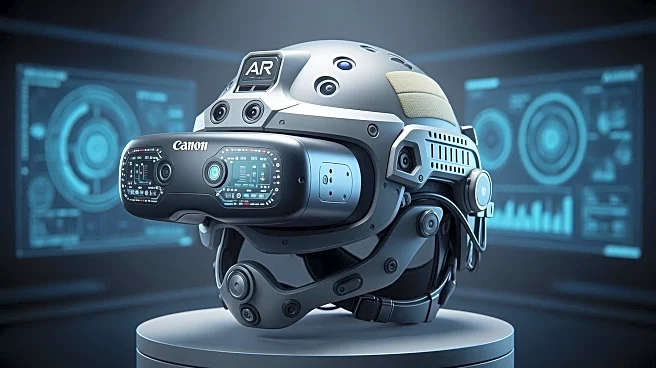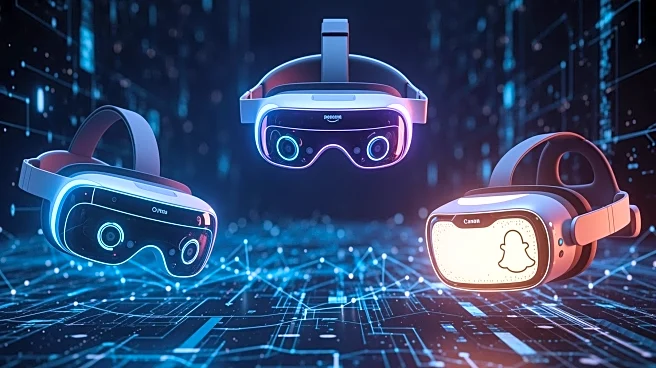What's Happening?
In 2025, significant advancements in augmented reality (AR) are poised to transform the tech industry, as highlighted by recent updates and innovations. Key developments include Apple's Vision Pro hardware
and software updates, which are expected to enhance mixed reality experiences and potentially increase mainstream interest in AR. Niantic's Peridot has evolved from a novelty to a practical AR companion, offering voice features that enhance user experiences in tours and local discovery. Additionally, the tech industry is witnessing a consolidation of AR/VR talent due to layoffs, which may accelerate the development of enterprise tools and consumer applications. These shifts indicate a growing focus on integrating AR into practical workflows, moving beyond mere demonstrations to measurable productivity gains.
Why It's Important?
The advancements in AR technology have significant implications for various stakeholders in the tech industry. For developers, the convergence of talent and tools on specific platforms could dictate where to focus their efforts, potentially leading to faster innovation and adoption. For businesses, the integration of AR into workflows promises measurable productivity improvements, making AR a valuable investment. The focus on practical applications over spectacle suggests a shift towards more sustainable and impactful uses of AR technology. As companies like Apple and Niantic push the boundaries of AR, the industry could see a redefinition of user experiences and business operations, influencing both consumer and enterprise markets.
What's Next?
As AR technology continues to evolve, stakeholders can expect further developments in both hardware and software. Apple's ongoing commitment to AR could lead to increased developer interest and consumer adoption, while Niantic's practical applications may inspire similar innovations across the industry. The consolidation of AR/VR talent might result in more focused and efficient development efforts, potentially leading to breakthroughs in enterprise and consumer applications. Companies and developers will likely prioritize platforms that offer the best convergence of talent and tools, shaping the future landscape of AR technology.
Beyond the Headlines
The shift towards practical AR applications raises questions about the long-term impact on user behavior and industry standards. As AR becomes more integrated into daily workflows, it may redefine how individuals interact with technology and each other. The ethical implications of AR, such as privacy concerns and data security, will also need to be addressed as the technology becomes more pervasive. Additionally, the cultural acceptance of AR as a tool rather than a novelty could influence its adoption across different sectors, potentially leading to new norms and expectations in both personal and professional settings.











